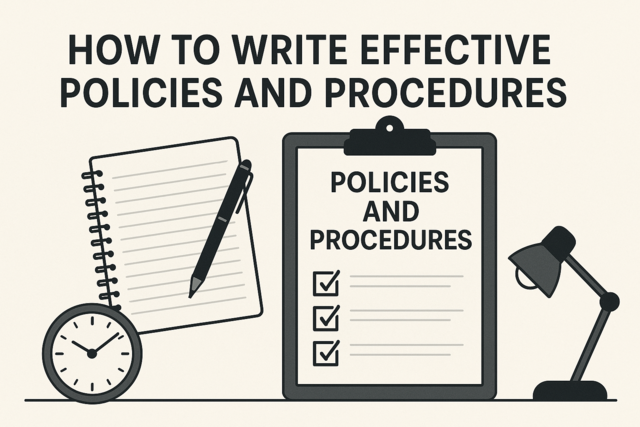This article will give you tips on how to provide great customer care, whether your business is strictly online or online service is only one way you do business with customers.
There are other ways that you will want to provide good customer service, and we will talk about them here:
Web site: Your Web site is a type of customer service contact tool. Does it provide good customer service? An entire book could be written on how to create a customer-friendly Web site, but we will look at just some select tips here.
-
Have a customer service link on your site so that people can click it to complain about bad service, ask questions, and contact someone about a warranty issue. This "one-click service" is a great way to centralize your service and make sure no one slips though the cracks.
-
When creating your Web site, try to develop it from the customer's perspective. It can be tempting to put all of your business information on your site, but a customer is not always looking for your annual report from three years ago or your organizational chart. Perhaps they just want to buy something but cannot find the "buy now" button. Make sure that you are using customer-centered language on your site and you make clear the one or two things you want your customer to do, such as make purchases or contact you.
-
Provide more than one contact method on your Web site, including fax, e-mail, and telephone numbers.
-
Do not make clients click too much to find the information they are looking for. If necessary, have a professional help you develop an organized Web site.
-
Provide a secure environment in which people can purchase your products.
-
In your shopping carts, tell your customer the total number of steps that they can expect and what step they are on now. Customers who are shopping want to know that they are step three of five and will be more likely to buy.
-
Create Web sites that are quick to load.
E-mail: E-mail is a business tool that can be powerful or ineffective. A good e-mail from a business can result in a sale, while a bad e-mail can have your address blacklisted as spam!
When sending out e-mails, be sure to provide very clear, distinct subject lines. Do not provide subject lines that are too friendly or obscure. If possible, put the company name in the subject line.
People also look at the "from" line before they open a message. Your "from" line should be from your business uniform resource locator (URL) address. If you are using a third party e-mailing service, you should ask it to make it appear to be from your address. For example, if your address is XYZinc.com, people will recognize it and open it, but if the address is MailBlaster.com or something like that people may not recognize it and will trash it unopened.
When communicating with e-commerce clients, it is acceptable to send periodic e-mails to them on specific company matters and maybe to send them information on specials. Do not do this more than quarterly, however.
If you would like to communicate with them through e-mail on a more regular basis, one way you can do that is to offer an opt-in newsletter. Opt-in newsletters are e-mails that you create that someone has to subscribe to, usually through a signup line on your Web site. When subscribing, the customer is giving you permission to market to them. Send out a newsletter that is either weekly, biweekly, or monthly. Reconsider anything that is more or less frequent than these three models.
There are many permission-based e-mail service providers out there, but Constant Contact is one of the biggest and best. When sending permission-based marketing, be sure to provide valuable information, not just blatant marketing messages, and plenty of links. Studies have shown that the more links you have in your e-mail, the more likely it will be read and clicked. (The "sweet spot" is about 20 to 25 links per message). Do not forget to comply with the CAN-SPAM Act and include an "unsubscribe" button on your link.
When customers contact your business by e-mail, use an automatic responder to contact them back immediately: Let them know that you received their e-mail and you are going to respond to it within a certain timeframe. If at all possible, try to keep that timeframe less than 24 hours.
General e-commerce customer service ideas:
-
Ship out products as quickly as possible. The Internet is an instant medium and people do not like to wait for things that they have bought online. If what you are selling is not downloadable, be sure to put it in the mail the next day and even offer faster mail service for more money.
-
E-mail the customer to let her or him know when the product was sent out and then e-mail again in about a week to make sure the product was received. One more e-mail in about a month's time is appropriate to follow up and make sure they are enjoying the product.Want to learn more? Take an online course in Customer Service.
-
You will speak with customers from all over the world. Some businesses in some countries do very well at handling the cultural differences, language barriers, or unique challenges of other cultures. Other businesses in other countries do not and unfortunately U.S.-based businesses are often among the latter. While the U.S. may be a great place to live, underlining the key differences between countries during an e-mail is not always appropriate and could result in lost business.
-
Remember that all the good principles of customer service, such as rapport-building, communication, and putting the customer first, remain intact in the e-commerce relationship and are just augmented by these ideas.
Conclusion E-commerce has changed the way commerce has been done for millennia. However, it has not changed how customer service is offered. E-commerce should still include many of the other customer service techniques, with these being additional best practices to follow.
Handling Difficult Customer Contacts
In spite of your best efforts, you will not always satisfy customers. There are two reasons that this can happen. We will look at both of those reasons, focus on one reason in detail, and provide solutions.
You can't keep 100 percent of the people happy 100 percent of the time. That is a fact in business. There are times when you try to keep your customers satisfied but after the transaction they may not be.
There are two reasons for this:
-
You messed up somehow and the customer is legitimately less-than-satisfied.
-
The customer is simply someone who is never happy.
If it was your fault: One of the best ways to avoid a common customer dissatisfaction situation is to communicate with your customers. If you keep the lines of communication open, you will reduce the potential circumstances that lead to dissatisfaction. One of the ways that communication allows us to provide great customer service is to help us understand our customer's needs and manage our customer's expectations. Customers' needs may differ from what we assume, and if we work to fulfill the needs that we have assumed, we may not make them happy. As well, if we have not managed our customers' expectations, they may have unrealistic ideas about what we can do for them.
So the first rule of dealing with difficult customer situations is to avoid them with good communication and by working to understand customer needs and managing expectations.
Managing expectations is a simple matter of telling a customer what to expect through the transaction. If there are several steps, tell the customer that there are several steps. If there is some waiting involved, tell the customer that there is some waiting involved. Being upfront about the process will help the customer remain satisfied.
In spite of our best efforts, though, we sometimes drop the ball.
If you messed up, and the customer is legitimately less-than-satisfied, you need to fix it. Plain and simple. Do what is necessary to keep the customer happy.
How do you do that? The first way is to address the issue head-on. Even if there is a perfectly good reason for the poor service that customers received, they do not see that from their side. and they deserve to receive top-notch service from you each time. For example, car rental companies are notorious for struggling with poor customer service issues because reservations do not necessarily keep cars on the lot.That is because the rest of the world considers a reservation as something that holds a car as soon as it is made. However, in the car rental industry a reservation is actually just a notice to the branch that a customer needs a car; it does not automatically guarantee a car is "attached" to the reservation. If the company is told by one customer that the car will return by noon, they may take your 2 PM reservation and feel that there is plenty of time to get the car ready. Unfortunately, if the first customer decides that he or she cannot make it in until 5 PM, the car rental company is left short a car. If they did not have a lot of cars to begin with, your 2 PM reservation will not be honored.
Now, whose fault is it? The car rental company cannot make more cars on the spur of the moment, and it is not reasonable to expect them to run out and buy another car if they are short. Nor can they make a customer come in sooner if that customer simply keeps the car. They can charge for the longer period of time and there are times when they can go pick up the car, but if the customer is out of town and was delayed then there is nothing they can do.
In spite of the fact that it is not the rental company's fault, the reality is that you do not have a car when you reserved it. Do you care why not? Of course not. In some cases, you could be accommodating and understanding, but sometimes it could be inconvenient if you do not get a car when you need it. The company can give you the reasons that you did not get a car, but even if those reasons are true, the end of the matter is that youare not happy because you did not receive the service you expected.
We used the above example to show you a scenario in which it was not the business' fault that poor service was provided, but the customer came away less than satisfied. Many times it is the business' fault that poor service was provided.
Regardless, in both cases, it is the company's responsibility to make it right. The first step is to apologize. Whether it is your fault or not, the customer deserves an apology. You may give a reason if you want, or you may not. You will have to judge whether it sounds like an excuse. Legitimate reasons are sometimes okay, but excuses are not, so think before you say anything! Remember, just because you gave a reason for the bad service provided, it does not make it right. You will need to do more. In order to do that, you need to know what will make the customer happy. Be forthright and just ask them. "What would make you satisfied in this situation?" The customer will tell you and then you should do it.
Here is an example using the rental car situation:
Agent: "I'm sorry that we don't have a car for you. Unfortunately, the person who had your car has not returned yet. Even though that was their decision and we're doing everything we can to solve the matter, the fact is, you don't have a car right now. I'd like to make it up to you. First, I'm working on a car. But second, I wanted to know -- once you're in a car -- what would make you satisfied?"
The customer might provide an idea. If he or she does not, then the counter agent may have some ideas, including a free tank of gas or a free upgrade or a discount.
Think about what is appropriate in your industry and train your staff to know what to do.
If you provide bad customer service and the customer leaves dissatisfied, you have an opportunity to make it right and keep the customer happy.
When dealing with these situations always be:
-
honest with the customer;
-
frank about your desire to keep them happy;
-
willing to do what it takes to make them happy.
However, what happens if you cannot make the customer happy?
The customer is not happy: There will be times when the customer is simply not happy. You may have given poor customer service and the situation could not be solved. Perhaps you missed the opportunity, or perhaps the customer was too angry to let it be solved adequately, or perhaps the customer simply will not let the issue go. Or perhaps the customer is simply not a happy person. That happens, too.
As unfortunate as it is, you may need to make a tough decision in these cases. If you have done everything in your power to correct the mistake or overcome the customer's negativity and have failed, you will need to "cut them loose." Firing your customers is a radical concept in business, and many businesses would rather accept the upset customer on a continuous basis. However, these people can be very poisonous to your business. Although they may give you their money willingly, they may continue to speak poorly about you to their friends and family and they can also demoralize your employees.
In these cases, you should seriously consider asking the customer to no longer do business with you and to find somewhere else to go where they might receive the quality of business they expect.
Of course, you do not want to make this a typical business practice, but you will find that there may be a couple of clients whose absence will markedly improve the atmosphere at your business. Just make sure that you have done everything you can first to attempt to make them happy.
Conclusion Dealing with people can be a challenge. Everyone measures things differently. Keeping open lines of communication can help us to avoid a situation where someone is dissatisfied with the product or service received from our business. If a customer is dissatisfied, we need to work immediately to make it right. We need to do what it takes to make it right. If it is a situation in which we simply cannot make it right in the customer's eyes, we may have to make the hard decision to end the relationship with the customer. However, always, always try to make it right first.























